February 28th, 2018 — Designer Stuff
So you are a first time home owner or you are moving somewhere new, it’s important to know what you are buying but even more important to know where you are buying.
)
1. Don’t just look at move-in cost, mortgage rate and taxes – view the cost and exchange of other homes in the area in the last 20 years. You can gain a better scope of the fluctuation in exchange rate and compare it to the amount of time you wish to live in your home, the amount you are buying for, the amount you will want to sell for one day and whether or not it is a property you plan to rent – or continue to invest in.
2. Look at community – who will your neighbors be? If you live in the city and looking to buy a property -the potential for resident turnover rate is most often higher than in a suburb.
3. Career, jobs, commute – know how far it is from your place of employment, how much commute will be, determine the cost of travel, know how close airports are if you fly often for work
4. School districts – it’s important to do research about the school district and education in the area – including public and private schools as well as if they are being home schooled
5. Distance to grocery stores, local markets – yes, a lot can be done online nowadays but it’s important to know how far your basic essentials and necessities are to you
6. Entertainment – check out events in the town and area, is there a city close by? is there a town within walking distance away? find out what’s important to you and if your area can provide that to you without having to travel far to experience what you need that makes you happy and fulfills you
7. Health and wellness – important to be able to check distance to hospitals, police stations and fire houses in case of emergencies- most of the time they are located close by or in the center of surrounding communities – cities are challenging when it comes to this
See more here: sixdifferentways.com
February 25th, 2018 — Designer Stuff
Tomatoes – those delicious, juicy fruits often mistaken for vegetables because of their extremely subtlety sweet taste. Used in a variety of dishes from sauce to salsa, eaten raw, added to salads or garnish on your hamburger – it’s good to know what are the best tomatoes to buy or grow, what to look for and how to keep them fresh for longer.

The best you can buy – what to look for:
If you’ve ever eaten an unripened or overly ripened tomato, you know their taste changes dramatically when they aren’t those juicy, flavorful fruits we know and love.
Tomatoes with thin walls and lots of jelly that surround the seeds make the best, most flavorful tomatoes. The thinner the walls the more room for the jelly – if you can help it, don’t remove the seeds, the seeds help improve flavor.
- Choose locally grown tomatoes – the less distance a tomato travels the riper it can be when it is picked. Commercially grown tomatoes often yield high production and can result in tomatoes with less sugars and other flavor compounds. Plus the engineering of these tomatoes to preserve them longer especially for transportation often have thicker walls and less of that good, tasty jelly.
- Try an Heirloom – Heirloom tomatoes (often grown locally) come from naturally pollinated plants and seeds that have been growing for decades and haven’t been hybridized
- Weird looking tomatoes – oddly shaped tomatoes, even those with a few breaks or cracks in the skin are fine to eat – they don’t have to be perfectly symmetrical to be just as delicious – just watch out for tomatoes that are overly soft or leaking juice
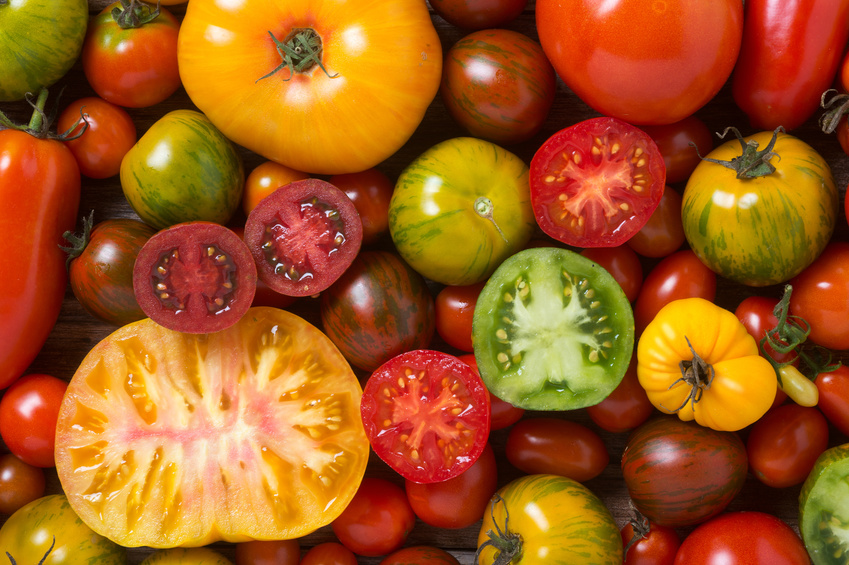
How to keep your tomatoes fresh:
- Don’t refrigerate
- Freeze instead of canning if you have a surplus of tomatoes for the off-season. Core them and freeze them in storage bags.
- Store tomatoes stem end down, it prevents the escaping of moisture and bacteria from entering
- Bag them with a banana or an apple if the tomato is hard and not ripened, both fruits emit a natural gas called ethylene that hastens ripening
Visit link: sixdifferentways.com
February 22nd, 2018 — Designer Stuff
Want to make a unique dish that has a taste in the likeness of a particular region or country but without searching for a specific recipe? Below are different veggies, foods, fruits and spices used commonly in different cultural cooking to put you in the right direction!
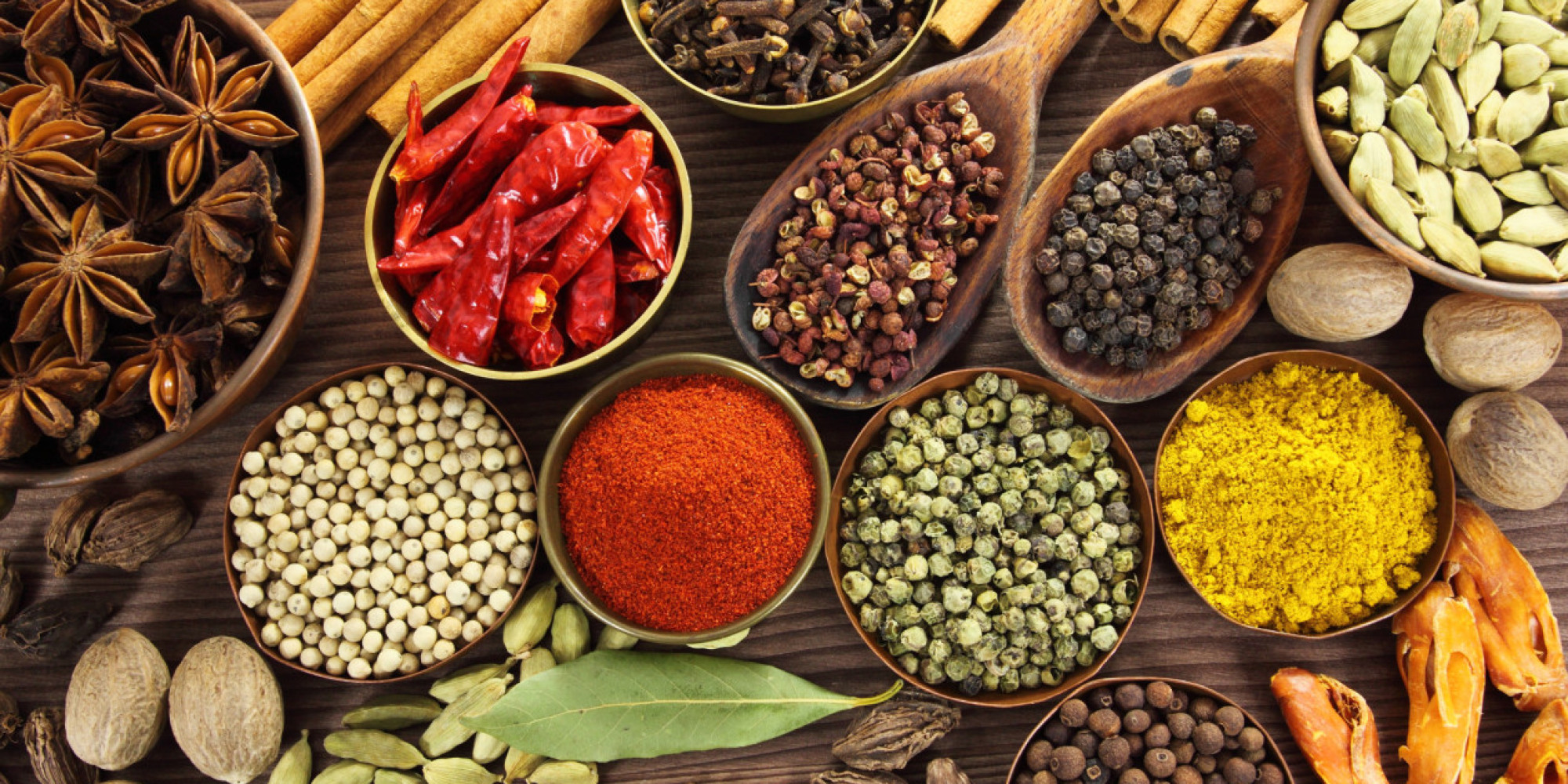
Middle Eastern Cuisine
- Chickpeas
- Cumin
- Mint
- Black Limes
- Rose Petals
- Dill
- Saffron
- Mahleb
- Za’atar
- Sesame Seeds
Thai Cuisine
- Sweet Tamarind
- Guava
- Green Papaya
- Dragon Fruit
- Custard Apple
- Rambutan
- Young Coconut
- Mangosteen
- Peanut Oil
- Rice Vinegar
Mexican Cuisine
- Black Beans
- Pinto Beans
- Chipotles in Adobo
- Achiote Paste
- Hominy
- Canela
- Epazote
- Dried Jamaica Flowers
- Piloncillo
Cuban Cuisine
- Plantains
- Black Beans
- Yellow Rice (bijol)
- Annatto Seeds
- Pork (chorizo)
- Chicken
- Flan
- Condensed Milk
- Sugar
Japanese Cuisine / Types of Sushi
- Chirashi
- Temaki
- Inari
- Uramaki
- Musubi
- Futomaki
- Hosomaki
- Nigiri
- Gunkan
- Oshi
Asian Cuisine / Asian Dumplings
- Shui Jiao
- Gyoza
- Wu Gok
- Har Gow
- Wontons
- Shu Mai
- Kanom Gui Chai
- Tibetan Momos
- Banin Bot Loe
Preserved Fish (used in many different countries and cultures)
- Sardines
- Maskerel
- Sablefish
- Smoked Trout
- Gravlax
- Anchovies
- Pickled Herring
- Salt Cod
- Cold Smoked Salmon
- Hot Smoked Salmon
Goat Cheeses (used mainly in western European countries but all around the world)
- Goat Gouda
- Bucheron
- Majorero
- Ibores
- Clochette
- Mothais-sur-feuille
- Valencay
- Fleur Verte
- Ekte Gjetost
- Sainte-Maure de Touraine
Seed Spices (used often in many dishes around the world)
- Cumin
- Nutmeg
- Coriander
- Celery
- Yellow Mustard
- Annatto
- Green Cardamon
- Fenugreek
- Star Anise
- Fennel
- Caraway
February 21st, 2018 — Designer Stuff
Did you know there are many different varieties of the same vegetable and fruit we rarely get to see in grocery stores and farmer markets that we could use in our cooking, baking and in their raw form? It’s pretty amazing to know there is a lot more out there than what we’ve been typically using and what we are familiar with.
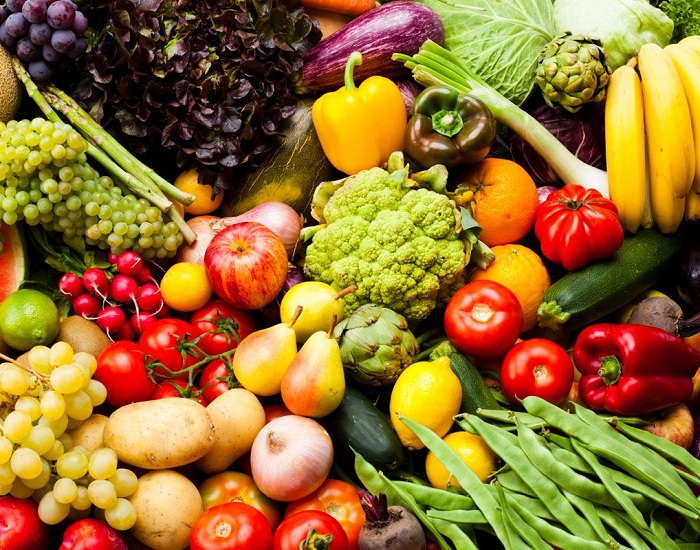
Beets – great for making soups, smoothies, salads, stir fry
- Red (the one you probably know about and the most common)
- White
- Chioggia
- Golden
- Bulls Blood
- Champagne
Mangos – great to eat raw or in salads, salsa, soups, smoothies, drinks
- Keitt (the one you probably see most often in grocery stores)
- Alphonso
- Tommy Atkins
- Ataulfo
- Francique
- Banganpalli
- Mancurad
Limes – perfect for stews and salsa, garnish for beverages, fish, chicken, beef
- Sweet (common)
- Key (common)
- Persian
- Kaffir
- Limequat
- Blood
- Finger
Hybrid Citrus – juice, smoothies, shakes, garnish
- Grapefruits (common)
- Mandarinquats
- Ojai Pixie Tangerines
- Tangelos
- Uniq Fruits
- Calamondins
- Meyer Lemons
- Oro Blancos
Winter squashes – soups, stews, stir fry, sauteed
- Spaghetti (common)
- Butternut (common)
- Acorn (common)
- Sugar Pumpkin
- Carnival
- Kabocha
- Turban
- Delicata
- Sweet Meat
- Blue Hubbard
Pears – great to be eaten raw or made into a jam, sauce, garnish
- Concorde (common)
- Warren
- Yali
- Shingo
- Fragrant
- Starkrimson
- 20th Century
Taproots – perfect for eating raw or made into soups, stews, stir fry, sauteed, baked, mashed
- Radish
- Turnip
- Beet
- Parsnip
- Celery Root
- Carrot
- Rutabaga
- Burdock
- Jicama
Cherries – great to be eaten raw, pie, baking, compote, garnish
- Rainier
- Montmorency
- Bing
- Balaton
- North Star
- Van
- Sweetheart
- Skeena
- Early Richmond
February 20th, 2018 — Designer Stuff
Every woman reacts differently right before their period – some get weepy and cry, others become angry and impatient and some say they aren’t affected whatsoever – whatever the case may be, if you are feeling a little different than usual a week to a few days before your period you can help offset the imbalance by eating certain foods.
/cdn.vox-cdn.com/uploads/chorus_image/image/52047751/shutterstock_376181395.0.jpeg)
5 Foods that help fight PMS
1. Greek Yogurt – calcium rich and probiotics ease the tummy of any pain during this month as well as keep the yeast in your vagina balanced
2. Almonds – Nuts especially almonds are jam packed with vitamin e and help alleviate pms symptoms
3. Pumpkin Seeds – magnesium helps with bloating which can make us feel sluggish, tired and irritated
4. Salmon – Omega 3 helps with cramps but for some, doesn’t occur during pre-menstrual
5. Turkey- Tryptophan is the chemical found in turkey that has a calming effect and sometimes can even be used as a sleep inducer, that’s why we get so tired in the USA during thanksgiving, tryptophan can help with irritability during PMS

3 Foods that make it PMS worse
- Potato Chips – anything salty will make you retain more water which will make you more bloated
- Coffee – caffeine is a stimulant which can cause blood to pump faster to parts of our body because it increases our heart rate
- Croissants, scones and muffins – the carb and sugar mixture can cause a burst of energy due to the sugar while a false prolongation of energy due to the carbs, however our body is digesting them at the same time thus changing the natural way our bodies would decompose them in their natural state
February 17th, 2018 — Designer Stuff
Pickled strawberries are easy to make and offer a tangy sweetness to a variety of beverages, desserts and dishes.

February 14th, 2018 — Designer Stuff
Cast iron skillets are excellent for cooking a variety of foods.
Why do we love cast iron skillets?
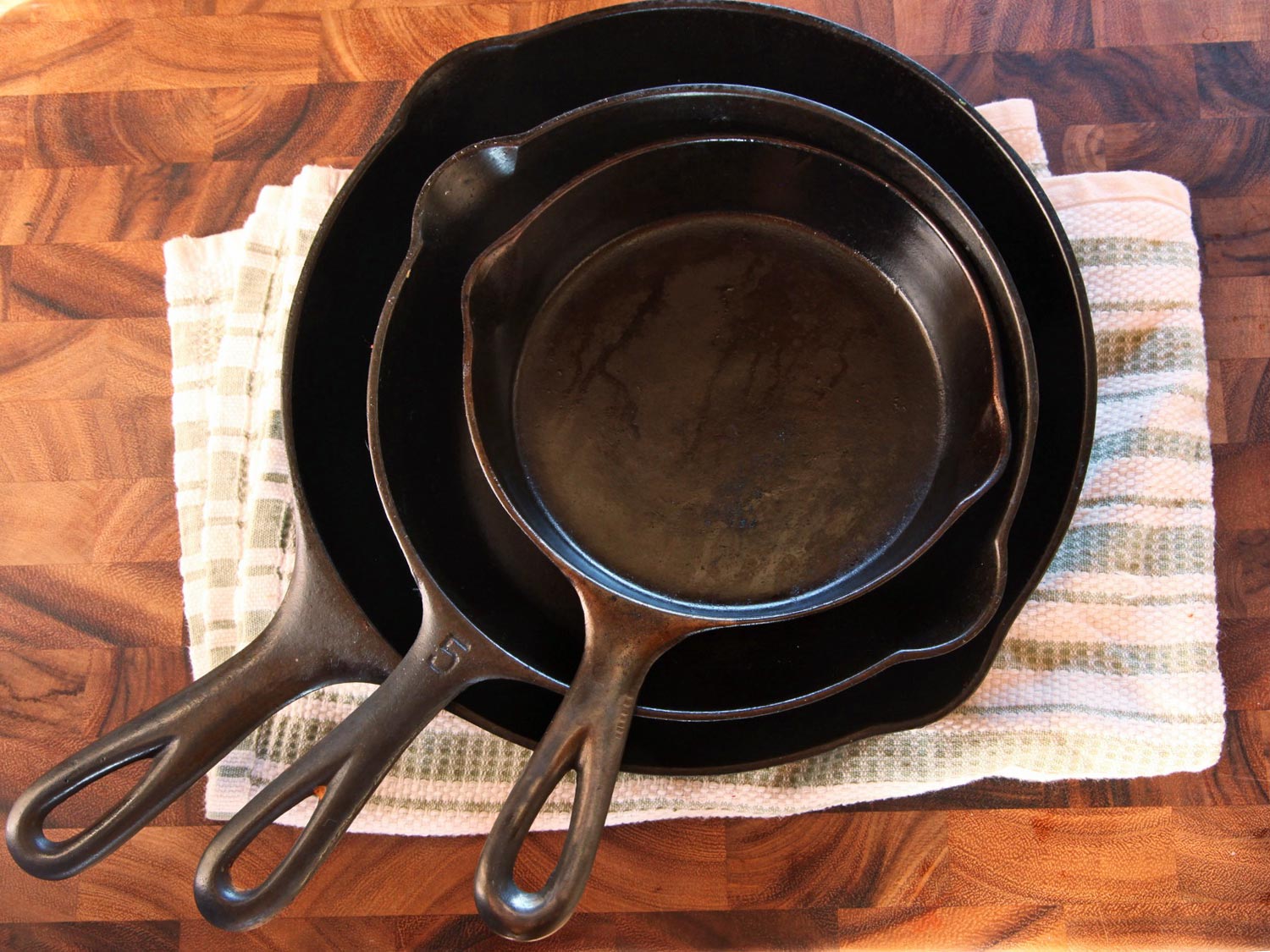
February 9th, 2018 — Designer Stuff
When planning a camping trip its important to know the different ways you can cook to get the most from your meal.

Roasting Fish – Find a Y shaped branch and a long stick, you can sharpen the edge of the stick with a knife so that its pointed and stick the fish on the end. Place the Y shaped branch firmly in the ground and the long stick in the center of the Y shaped branch. Use a large rock or heavy object to secure the stick (non fish side) while the fish roasts over an open flame. Rotate the stick so the fish cooks evenly on all sides.
Grilled Cheese – use a Y shaped branch and wrap in aluminum foil to create a frying pan. Then use a cross brace stick over an open flame to roast your grilled cheese.
Poultry – Carefully heat rocks in a fire, using tongs, place the hot rocks inside of your cleaned bird adjacent to thick parts of the food. Place your bird on a sheet of aluminum foil. Cover the cooking fowl with leaves and bark to help retain heat. Continue to repeat this process if the meat is entirely cooked.
Bacon and eggs – burn the fire down so it is only glowing coals. Lightly wet a paper bag and place strips of bacon on the bottom of the bag and break the eggs on top of the bacon. Fold the top of the paper bag and pierce a hole just below the fold of the bag where a support stick will go. Place a stick in the hole and hold over the coals or use a Y branch placed firmly in the ground with the support stick in the center so the bag is directly over the coals. Allow to cook for about 10 to 15 minutes. Wet down the bag using a spray bottle with water if the bag starts to burn.
Corn – individually wrap each corn husk, wet 3 sheets of paper, wet the corn and season it to taste. Wrap the corn in the sheets of paper, one at a time to seal the steam inside. Place the paper bundle with the corn inside over the hot coals (once again wait until the fire has burned down and there are only glowing coals) or place in hot ashes. Spray the paper if it gets dry.
See original here: sixdifferentways.com
February 7th, 2018 — Designer Stuff
When having a dinner party, it’s always nice to have a few finger foods, appetizers and hors d’oeuvres placed out for guests to enjoy while mingling and settling into the home. Going for a cheese, veggie, meat or fruit platter is sometimes the easier route but if you really want to impress your guests and give them a mouth-watering and delectable appetizer they are sure to remember you can create these combinations of gourmet recipes to nosh on before the meal begins.
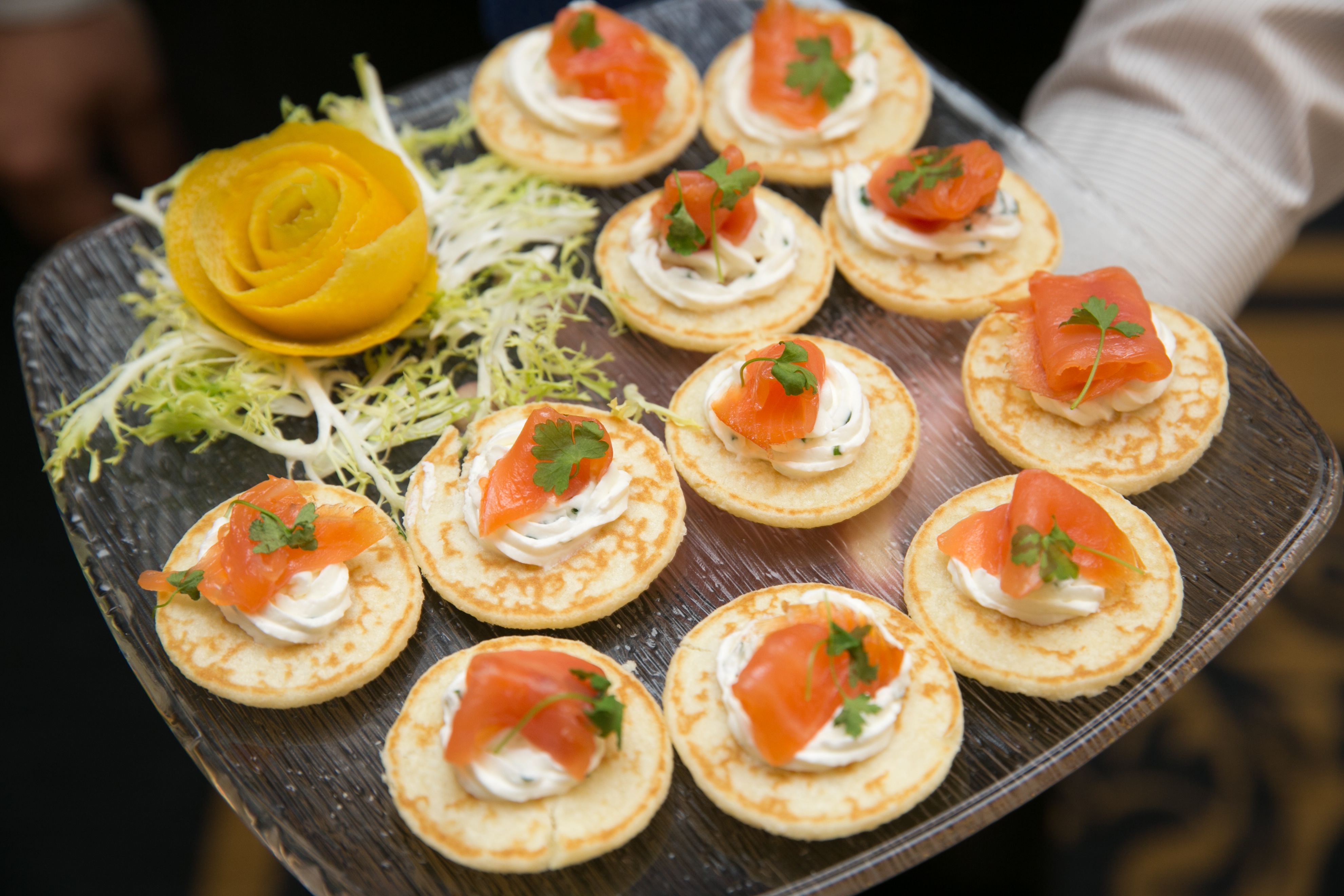
Nosh 1
- Watercress cracker
- Goat cheese
- Fig spread
- Capers ( 2 – 3)
Nosh 2
- Sesame seed cracker
- Brie
- Fresh raspberry jam
- Lemon zest
Nosh 3
- Rosemary and Garlic Cracker
- Mild Cheddar
- Prosciutto
- Sliced black olives ( 2 – 3 slices)
Nosh 4
- Black pepper cracker
- Liverwurst
- Spicy yellow pepper ( 1 – 2 slices)
- Rosemary (sprinkled)
Nosh 5
- Buttery cracker
- Saga cheese (a creamy cheese – mix of blue cheese and brie)
- Lox
- Grape tomato (cut in half)
February 6th, 2018 — Designer Stuff
Presentation can change the entire outcome of a dinner party – the hosts, the food and the set up can all play key factors in how perfect the night will go – adding little extra details can go a long way.

Jasmine Flower Napkin Fold
A nice touch when hosting a dinner party are folding napkins in creative ways similar to origami and placing them on each guests dinner plate. Below are 6 different ways you can fold napkins for your next dinner party or event with step by step help!
Cone Napkin Fold for a pure and simple look

Hat napkin fold is a standing fold that makes a bold statement

Swan Napkin fold for something a little fancier and more intricate

Star napkin fold is perfect for a birthday – you can do the cone napkin fold for all the other guests and create the star napkin fold for the special person whose birthday you are celebrating
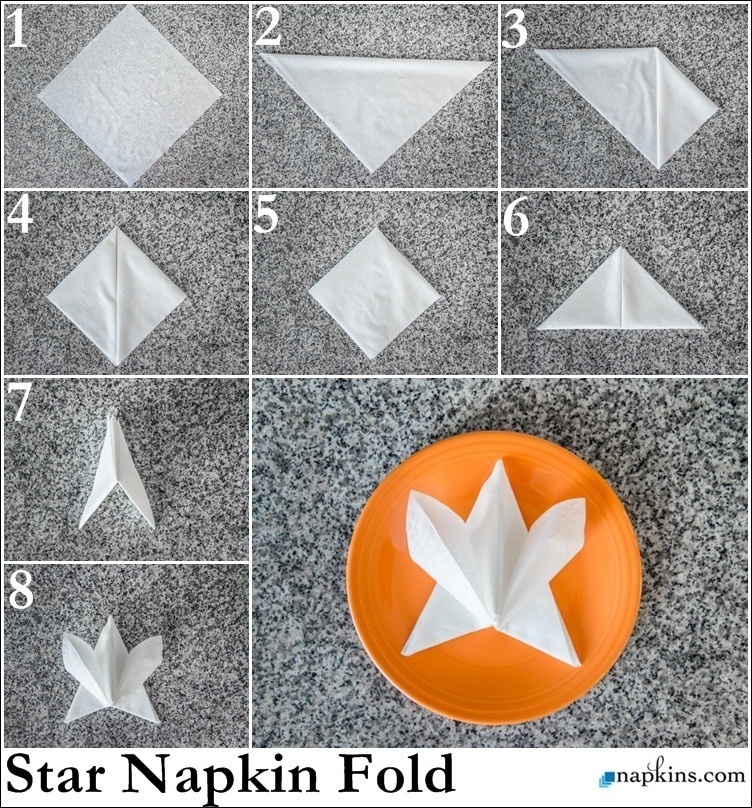
Butterfly napkin fold is an excellent choice for bridal showers

Opera napkin fold is a really great choice for holiday parties

With some many different ways of folding napkins to add a special touch to your next dinner party, you will find the right one for your special event!
)




/cdn.vox-cdn.com/uploads/chorus_image/image/52047751/shutterstock_376181395.0.jpeg)









